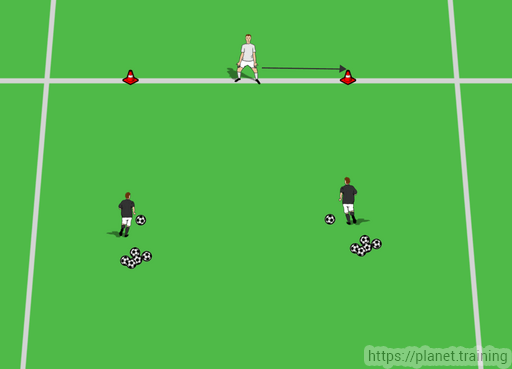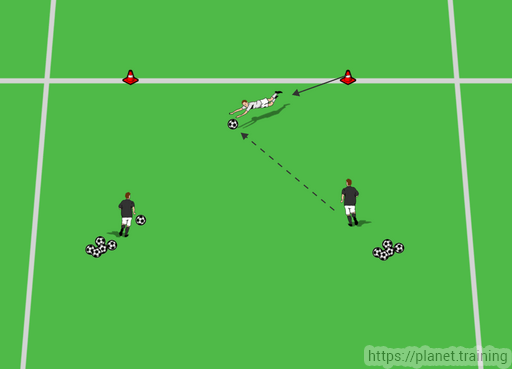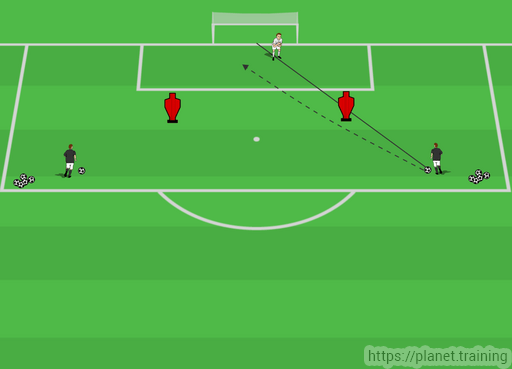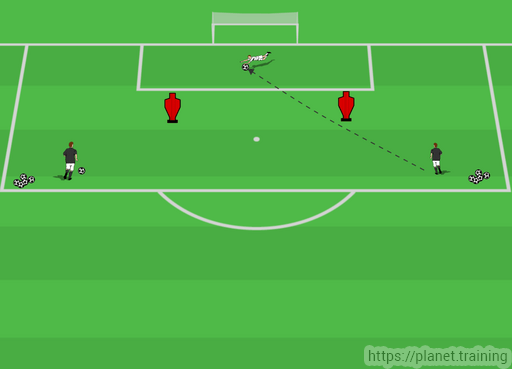By Wayne Henderson -
In order to make sharp, powerful low saves it is important to be in the correct position in order to generate the power to dive at full length. If the goalkeeper is diving from a position that is too upright, the keeper makes a save that is almost landing on top of the ball, whereas if the Goalkeeper gets into a lower position he/she can generate power, by pushing from the bent knees position and powerfully diving almost across the top of the ground, This is physically harder and more demanding, but the ‘keeper will be able to save shots a lot further away from them and be able to cover more of their goal.
Diagrams 1 & 2 are a good exercise for improving the “ready position”


A small 5 yard goal marked by cones. The Goalkeeper touches the top of the cone at whichever side the coach instructs, and because the ‘keeper has had to bend his/her knees slightly to touch the top of the cone they are already in a great position to perform an explosive dive almost horizontally towards the low shot along the ground hit by either the coach or another feeder.
In order to progress this to a more game related situation you have many options, one of which being the following Drill.
Diagram 3

Goalkeeper starts in good position in relation to the striker with the ball. The ‘keeper is in the ready position - knees slightly bent, feet shoulder with apart and shoulders vertically over the toes.
A mannequin is positioned as a defender might be in a game and the striker has the option of shooting past the mannequin and still being able to find the bottom corner of the goal.
Diagram 4

The Goalkeeper reacts to the shot by taking a quick step across and a sharp low drive towards the ball.
The ‘keeper must also maintain good focus during this drill, because the ball will be unseen for a split second as it goes past the mannequin, so the goalkeeper must concentrate fully to regain the path of the shot and execute good technique to complete the save.
Coaches must also remember that because the drill is trying to replicate a “game type situation” there will be times during the drill when the ‘keeper might not be able to catch the ball (depending on the timing, speed and accuracy of the shot) so it’s important that the ball does not go back into an area where strikers can score from – Ideally if the ball isn’t caught, it is diverted to a safe area wide of the goal.
Obviously, work both sides of the goal and the feeds can be varies in power, height and distance away from your Goalkeepers, depending on the age, physique, ability etc. Of the Goalkeepers you are working with.
By Wayne Henderson


